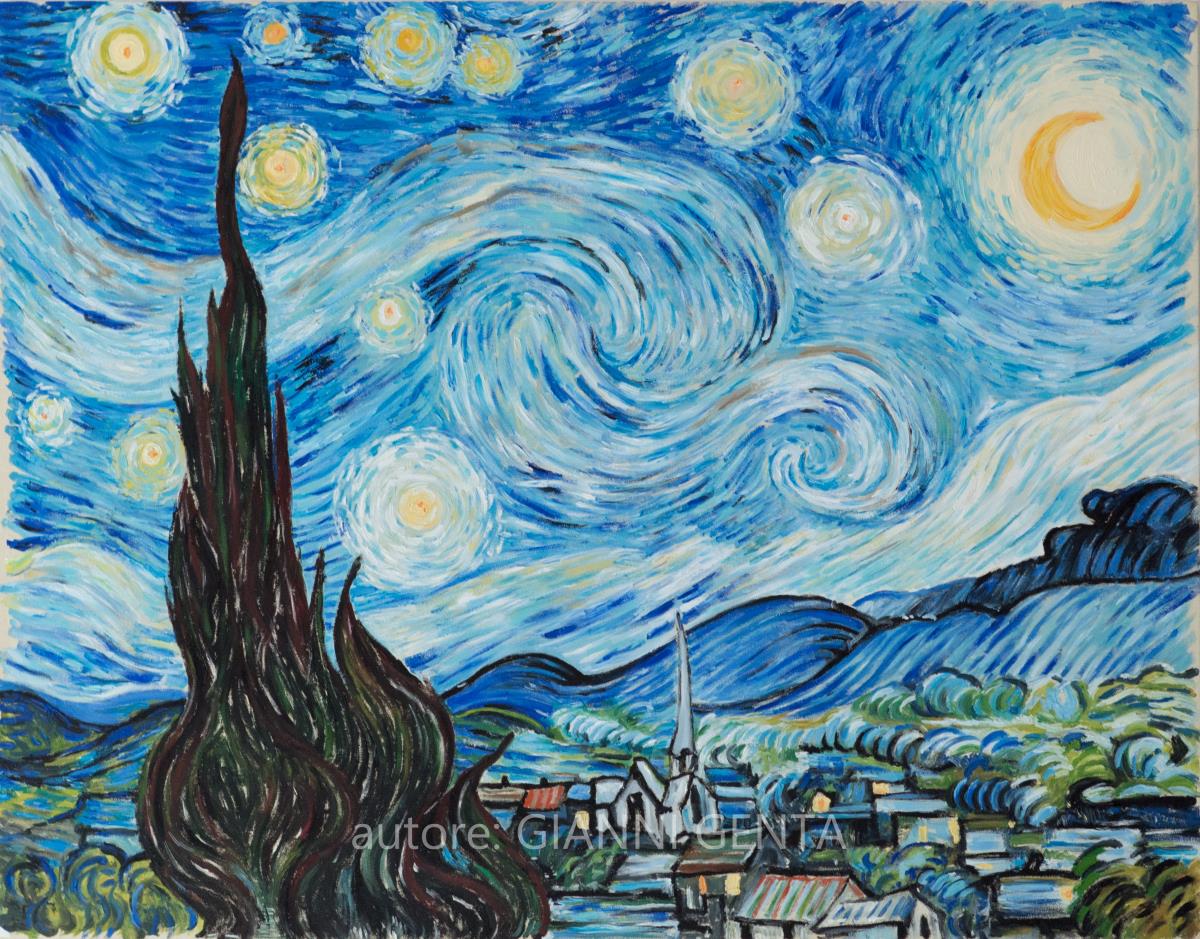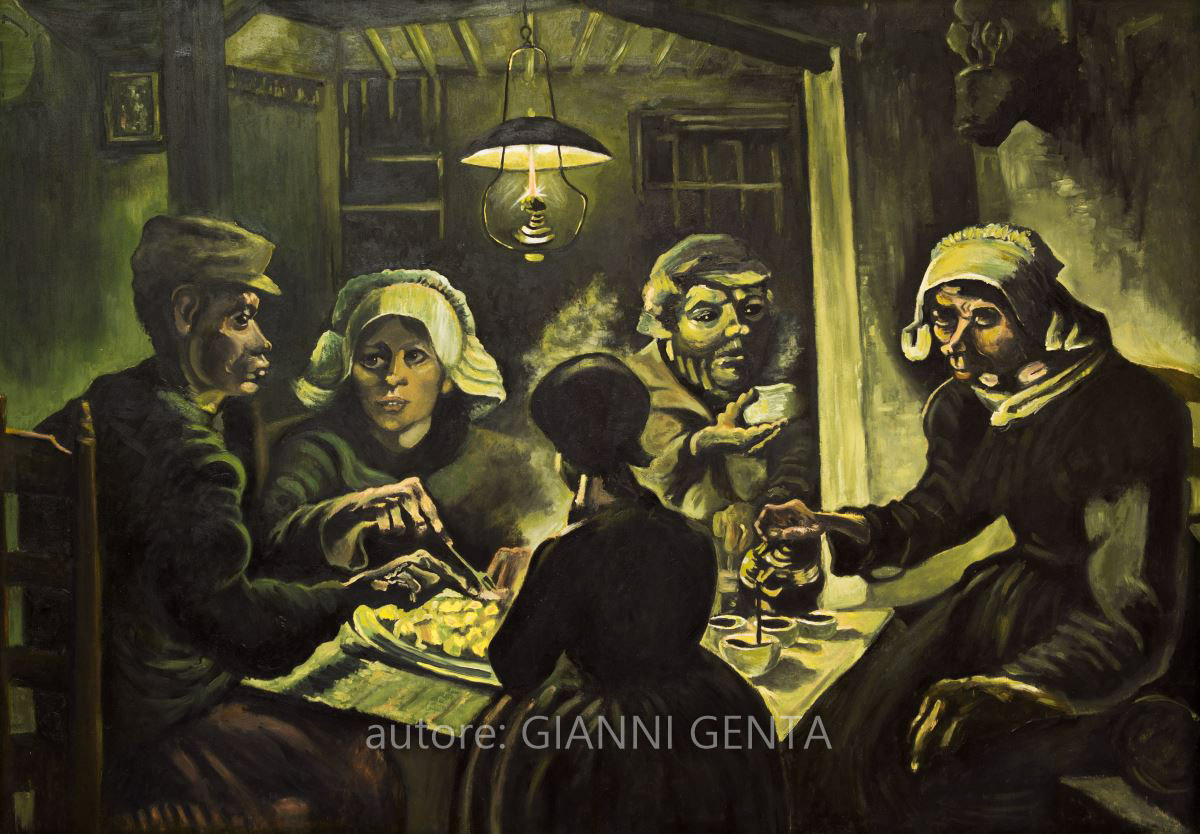Auvers Church
by Vincent Van Gogh
The Auvers church is a painting by Dutch painter Vincent van Gogh, made in 1890 and preserved at the Musée d’Orsay in Paris.
History
When Van Gogh left the Saint-Rémy-de-Provence hospital in May 1890, he decided to leave the French South completely and visit his brother Théo van Gogh in Paris, then head to Auvers-sur-Oise of his friend Camille Pissarro, so that he is subjected to the treatment of Dr. Paul Gachet. Here, van Gogh spent the last ten weeks of his life and in this short time he painted over one hundred paintings, including The Auvers Church.
Van Gogh had been involved in the representation of places of worship already in June 1885 when he executed the Church of Nuenen with the faithful: the subject of this work was Sunday liturgical service at the church of Nuenen, with various faithful encircled around the building sacred, resumed on the absidial side. The church of Auvers, made a month before the suicide of the artist, “almost seems to talk with the old work, resuming it and transforming it, throwing an ideal arc between the onset and the end of the van Gogh’s violent artistic evolution” (Admiral) . [1] Today the work is kept at the Orsay Museum, under the inventory number RF 1951 42. [2]
Description
Below is the description that gave van Gogh work, talking about it in a letter to sister Wilhelmina:
“I have a bigger picture of the village church – with the effect that the construction seems to be purple against a sky of pure dark blue, pure cobalt; the windows look like blue ocher spots, the roof is violet and partly orange. In the background, some blooming and sandy plants with the sun reflection of the sun. And again, it’s similar to the studies I did at Nuenen of the old cemetery tower, only now probably the color is more expressive, more sumptuous »
(Vincent van Gogh [3])
Even more screaming than in the past here, van Gogh renounces to an exact photographic reproduction of “stereoscopic reality” and projects his inner torments into the architecture of Auvers, manipulating shapes and colors in a free and subjective way, with an explicit grip of distances from impressionist and neoimpressionist naturalism (compare, for example, the present painting with the Rouen cathedrals of Monet). [4] It is this way that the apse of the twelfth century church, far from the rigid physical norms that characterize the built ars, does not come up with precision, but stagger convulsively, as if it were about to collapse. The low and compact size of the church is in fact characterized by soft and winding lines, used by the painter to generate a dynamism that is amplified by the two narrow streets that, bifurcating, tighten the building on one side and the other without giving you access. On the left path, then, a farmer ventures, who, however, turns the gap to the spectator, isolating him in a sense of anxious loneliness.
The visible figure, it has been said, is reinterpreted in this painting with a lot of expressive freedom. This also applies to colors that, overloaded, seem almost to palpitation, spreading the desperate pathos of van Gogh. All the shades of the painting, stretched on the canvas by means of brush strokes screwed on themselves, are in fact gravitated to meanings: this is the case green-yellow meadows, red tiles, but above all of the cobalt blue that pollutes the sky, making it a bush of whirling storms, almost as if it was night (although it is evidently daytime, as the shade projected by the church on the grass triangle which it has before). This arbitrary color and form does not only masterfully master orchestrate the “psychological atmosphere” of the work, which speculates with the feel of the artist as oppressed by a silent strike of prey, but also sums up all the addresses stylistic that will then be distinctive of expressionist art. “Van Gogh had lost all access to the divine,” says art critic Federica Armiraglio, “and faith in painting, which had replaced the religious one, was about to be extinguished.” [1]
This post is also available in:
 Italiano
Italiano





